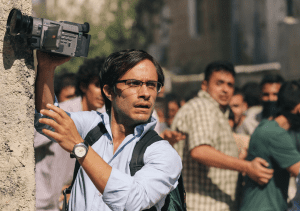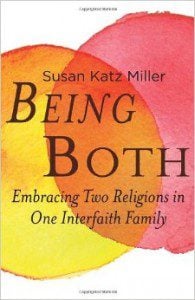 |
|
Rockin’ and rollin’
|
Like the customers who frequent a New York City street cart but are separated by a plastic window from the vendor inside, “Man Push Cart” gives us enough of a glimpse into the life of an immigrant laborer to remind us of the distance that separates people and especially classes in the United States.
The film, the directorial debut from Iranian-American film maker Ramin Bahrani, focuses on the story of Ahmad, a push cart vendor played brilliantly by Ahmad Razvi (himself once a street vendor). But similar to the snippets of information we might gather about from a taxi driver during a conversation on a 20 minute ride, we learn very little about the film�protagonist. This is the film�greatest strength.
In one scene, Bahrani takes us inside Ahmad’s cart and we see a close up of a of a coffee cup, with the upper half of a woman’s face in the background, talking to her friend as she waits for her bagel. Rather than have her voice drown out the noise of the coffee machine (as we might hear if we were the customer), we instead hear the slow drip of the coffee machine and the near silent movements of Ahmad within the cart. It’s a telling visual that Bahrani is wise enough not to cloud with needless words. Part of this, no doubt, is homage to the great Iranian film maker Abbas Kiarostami – whom Bahrani credits for teaching him – to 쳡y the most with the leastnd to pay 존tention to 묩fe�s opposed to the roller coasters of melodrama.
As a result, the film wisely focuses on the imagery of the daily rigor and monotony of Ahmad�life. In a scene that repeats throughout the film, we see Ahmad waking up at 2:30am, stock his food cart, and pull it through the streets of New York as cars pass by without notice. We do not, however, hear Ahmad talk throughout these scenes and as a result, the viewer is left to write his/her own script about what Ahmad may be thinking. It�a clever tactic that retains a bit of distance between us and Ahmad, one that plays out much like when we see cart vendors in our own lives and often wonder (that is if we chose to wonder) what path may have led them to that profession. In another scene, we see Ahmad carrying around a petroleum gas tank, something he carries for most of the film, including in one scene when he goes out to a Karaoke bar. It�a striking image that makes us examine how Ahmad�profession defines and stigmatizes him, even when he is not at his stand.
What makes 썡n Push Cartesonate is the powerful performance by Razvi. In an interview with the director, Bahrani talks about how he made Razvi unload equipment, pull the street cart, and minimize his sleep during the shooting so that he could 쥸haust him over the course of filming, just as his character was in life.he result is that Razvi character has a glazed look of absence and fatigue that greatly enhances the look of the film.
Soon Ahmad meets Mohamed, a wealthy New Yorker, who also hails from Lahore like Ahmad. They both exchange a few words and both confess that they have lived away from Pakistan for 촯o long to stay.ohamed, skillfully played by Charles Daniel Sandoval, later employs Ahmad to work odd chores around his spacious New York apartment. Mohamed shows little regard for Ahmad until he realizes that Ahmad was once a famous rock star in Pakistan – 촨e Bono of Pakistan and that the two even attended many of the same parties in Lahore. It�a revelation that alters the dynamic between Mohamed and Ahmad. Suddenly Mohamed now wants to hang out with Ahmad and even offers 촯 help in any way.
The interaction between Mohamed and Ahmad is a deft commentary on classism within South Asian culture and Bahrani deserves credit for unraveling the dynamics of status within Pakistani society. While Mohamed shows newfound interest in his 즲iendAhmad never quite reciprocates the friendship or trust. It�a telling example of how upper class immigrants often feel an affinity towards their lower class countrymen that they do not reciprocate.
Watching Ahmad�cautious distance between Mohamed, I recalled the many times when I often try to strike up a conversation with a Muslim (or South Asian or Arab) taxi driver only to be sometimes rebuffed by a rude or oblivious response. But is this trepidation not justified? While we may be eager to talk up our neighborhood halal cart vendor or Muslim taxi driver, would we do the same if we saw that person, say, at the mosque?
The strength of 썡n Push Carts that although we may want the director to make us see the world as a street vendor, Bahraini instead casts us as the customer – albeit a customer with a more intimate view into a laborer�life. The result is that the viewer is left not only to piece together Ahmad�life (Why did his wife die? Why did he come to the US?) but also to ask why don�we know more about people like Ahmad? What barriers exist in our own lives that prevent us from exploring his story?
Bahrani deserves credit not only for creating a film that implores us to ask these questions but also reminds of why it is so easy to ignore them.
Zahir Janmohamed is the co-founder of The Qunoot Foundation and Associate Editor of altmuslim.com. “Man Push Cart” is now playing in select US cinemas and opens in the UK on October 6th.











